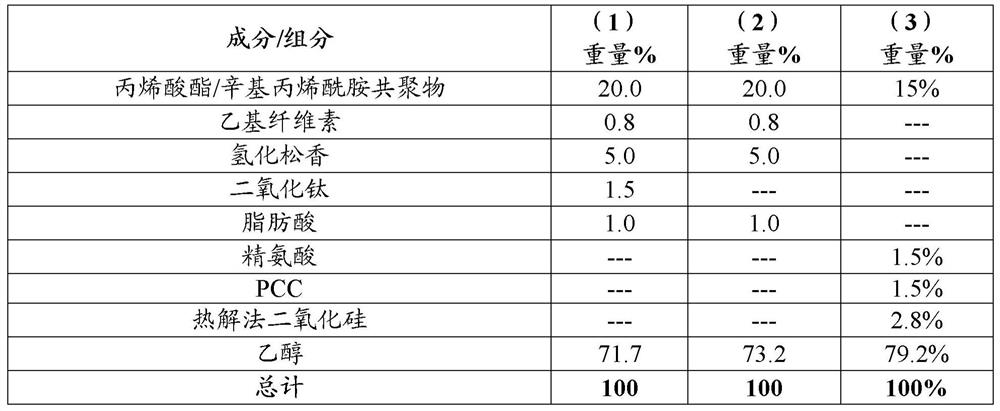Oral care compositions and methods for the same
A composition and oral technology, applied in oral care composition and its field, can solve the problems of reducing effectiveness and reducing sensitivity, and achieve the effect of reducing tooth sensitivity
- Summary
- Abstract
- Description
- Claims
- Application Information
AI Technical Summary
Problems solved by technology
Method used
Image
Examples
example 1
[0071] The sensitivity-reducing efficacy of exemplary film-forming compositions (1)-(3) was evaluated in vitro. In particular, the efficacy of film-forming compositions (1)-(3) to insert or seal dentinal tubules was evaluated. Test or exemplary film-forming compositions (1 )-(3) were prepared by combining ingredients / components according to Table 1 . Specifically, the ingredients / components of each of the test film-forming compositions (1)-(3) were combined or otherwise contacted with each other in a rotary mixing jar and mixed at about 3540 rpm for about 5 minutes or until a homogeneous suspension is obtained.
[0072] Table 1 Test film-forming compositions (1)-(3)
[0073]
[0074] Human molars were sliced and ground to prepare dentin sections. To evaluate the efficacy of film-forming compositions (1)-(3), each film-forming composition was applied directly to the dry dentin surface of individual human dentin sections with a soft nail polish-type brush. These were ke...
example 2
[0079] The exemplary film-forming composition of Example 1 (1) was evaluated on dentin sections against a commercial toothpaste for sensitivity (i.e. Sensitive Pro-Relief TM) in combination with the efficacy of maintaining, promoting and / or enhancing closure of dentinal tubules. The studies were performed by preparing slurries of commercial toothpaste and phosphate buffered saline (PBS) in a 3:1 ratio. The slurry was applied to the dentin surface by brushing with a soft nail polish type brush for 30 seconds, followed by PBS treatment for 15 minutes. Repeat this procedure 5 times. Half of the dentin sections received a one-time treatment with the exemplary film-forming composition (1 ) and the other half did not. After treatment, acid (i.e., Coca ) to excite all human dentin sections for one minute. Confocal images were acquired before any treatment (baseline), after treatment with commercial toothpaste, exemplary film-forming composition (1 ), and after acid challenge. ...
PUM
 Login to View More
Login to View More Abstract
Description
Claims
Application Information
 Login to View More
Login to View More - R&D
- Intellectual Property
- Life Sciences
- Materials
- Tech Scout
- Unparalleled Data Quality
- Higher Quality Content
- 60% Fewer Hallucinations
Browse by: Latest US Patents, China's latest patents, Technical Efficacy Thesaurus, Application Domain, Technology Topic, Popular Technical Reports.
© 2025 PatSnap. All rights reserved.Legal|Privacy policy|Modern Slavery Act Transparency Statement|Sitemap|About US| Contact US: help@patsnap.com



